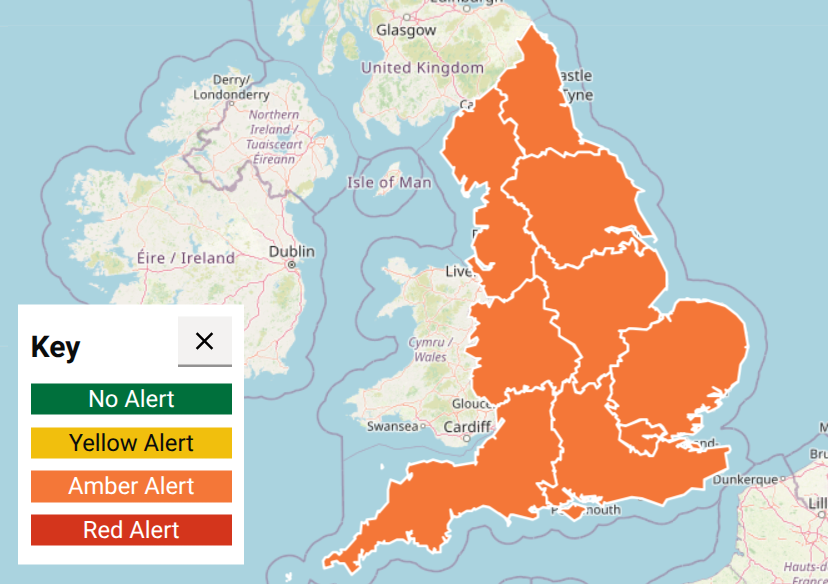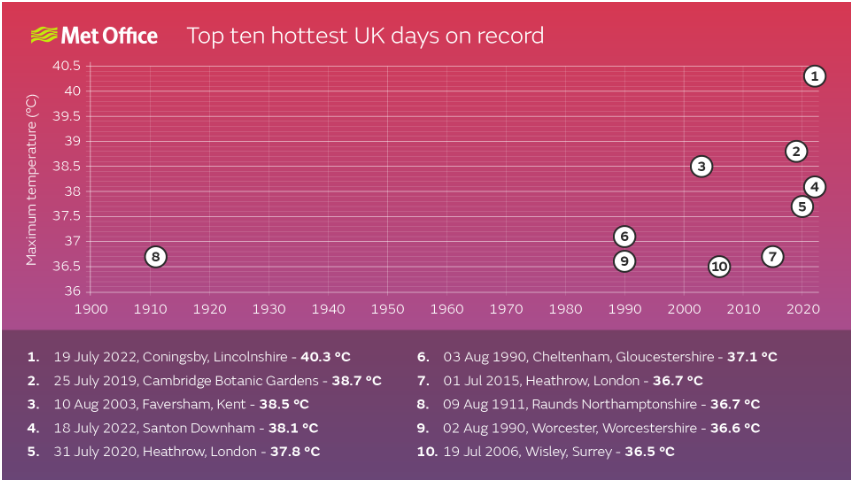
1 The Heat-Health Alert Service forewarns (or highlights) times of high temperatures, which may affect the public's health. It is designed to help healthcare professionals prepare and manage through periods of extreme temperature.
2. It is not a forecast for the general public, and yet it is often picked up by the national media. It is aimed at “health and social care professionals and any with a role in reducing the harm extended periods of hot weather can have on health”. It’s intended to provide notice to the health and social care sector, the responder community, the voluntary and community sector and government departments so that they can prepare and adapt.
3. For those heading out and about to enjoy the hot and sunny weather, part of the strain on the health services will come from increased cases of sunburn and heatstroke. Knowing the symptoms of heat exhaustion and heatstroke and what to do could help, before it gets too serious.
4. Heat exhaustion symptoms: tiredness, dizziness, headache, nausea, vomiting, excessive sweating and pale, clammy skin - cool them down
5. Heatstroke is more serious and potentially fatal. The body is now unable to cool itself down. Symptoms; confusion or lack of co-ordination, seizures (fits), loss of consciousness, high body temperature – a temperature of, or above, 40°C (104°F), red, hot skin that can be sweaty or dry, fast heartbeat, fast shallow breathing, diarrhoea - call 999 and cool them down
6. The Heat-Health Alert service is provided by UK Health Security Agency (UKHSA) in partnership with the Met Office but only for England. It is not a service for Wales, Northern Ireland or Scotland.

7. It runs from June - Sept and has been in operation since 2004. (There are also Cold-Health Alerts, which run November through March every year).
8. There are three levels of response: green (no alert within the Alert season), yellow (response), amber (enhanced response) and red (emergency response).
“An amber alert means that weather impacts are likely to be felt across the whole health service. At this level, we may begin to see some health impacts across the wider population, and an increase in risk to health for individuals aged over 65 years or those with pre-existing health conditions, including respiratory and cardiovascular diseases.”

Our climate is changing, our world is warming and hot summers are expected to become more common in the UK. With future warming, hot summers by mid-century could become even more common, with chances increasing further to around 50-60%. Met Office
9. Adverse health effects can be experienced by those vulnerable to extreme heat, perhaps due to their medication levels, mobility issues or housing provision. This might be elderly people or the very young who struggle to regulate their own body heat, or not realise they need to rest or drink more water. The hot weather places extra strain on the heart and lungs.
.png?no-cache=1750406803543&w=713)
Example of a Met Office Extreme Heat public service warning from summer 2022
10. There is a separate Met Office public warning available for Extreme Heat, which is more like the usual warnings for heavy rain and strong winds. It is rarely used, more so for extreme episodes like the intense heat of July 2022 when the UK record was broken as temperatures reached 40.3C in Lincolnshire. It is important to realise the difference between the Heat-Health alerts and their chosen audience and the separate Met Office National Severe Weather Warning Service (NSWWS), which could warn of the impacts caused by severe weather, such as extreme heat.
Loading recent activity...